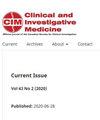Association Between ESR1 XBAI and Breast Cancer Susceptibility: A Systematic Review and Meta-Analysis.
IF 1.2
4区 医学
Q4 MEDICINE, RESEARCH & EXPERIMENTAL
引用次数: 0
Abstract
PURPOSE Estrogen receptor 1 (ESR1) XbaI polymorphisms may affect breast cancer susceptibility; however, the results of previously published studies are inconsistent. This meta-analysis aimed to investigate the relationship between ESR1 XbaI polymorphism and breast cancer risk. Methods: Articles from the PubMed, Embase, Cochrane Library, WoS, Scopus, Wanfang Data, CNKI, CBM and CQVIP databases were systematically searched to determine the association between ESR1 XbaI polymorphism and breast cancer risk. The pooled results were assessed using odds ratios (ORs) and 95% confidence intervals (CIs), followed by subgroup analysis. Results: Twenty-two studies involving 12,821 cases and 14,739 control subjects were analyzed. The pooled results indicated that ESR1 XbaI polymorphism may decrease risk of breast cancer in AG vs. AA (co-dominant model: OR = 0.88, 95% CI = 0.79-0.97, P = 0.015) and AG + GG vs. AA models (dominant model: OR = 0.89, 95% CI = 0.80-0.98, P = 0.022). Subgroup analysis indicated significant associations between the ESR1 XbaI polymorphism and breast cancer risk were observed in Asian subjects, non-Hardy-Weinberg equilibrium study, post-menopausal status and hospital-based subgroups under the AG vs. AA and AG + GG vs. AA models (all P < 0.05). Conclusions: Our analysis of pooled data indicated that AG genotype in ESR1 XbaI may be a protective factor for breast cancer patients in some subgroups.ESR1 XBAI与乳腺癌易感性之间的关系:一项系统综述和荟萃分析。
目的雌激素受体1 (ESR1) XbaI基因多态性可能影响乳腺癌易感性;然而,之前发表的研究结果并不一致。本荟萃分析旨在探讨ESR1 XbaI多态性与乳腺癌风险之间的关系。方法:系统检索PubMed、Embase、Cochrane Library、WoS、Scopus、万方数据、CNKI、CBM、CQVIP等数据库的文章,确定ESR1 XbaI多态性与乳腺癌风险的关系。采用优势比(ORs)和95%置信区间(ci)对合并结果进行评估,然后进行亚组分析。结果:共纳入22项研究,共纳入12821例病例和14739例对照。合并结果显示,ESR1 XbaI多态性可降低AG与AA(共显性模型:OR = 0.88, 95% CI = 0.79-0.97, P = 0.015)和AG + GG与AA(显性模型:OR = 0.89, 95% CI = 0.80-0.98, P = 0.022)的乳腺癌风险。亚组分析显示,在亚洲受试者、非hardy - weinberg平衡研究、绝经后状态和基于医院的AG与AA模型、AG + GG与AA模型的亚组中,ESR1 XbaI多态性与乳腺癌风险之间存在显著相关性(均P < 0.05)。结论:我们对汇总数据的分析表明,ESR1 XbaI中的AG基因型可能是某些亚组乳腺癌患者的保护因素。
本文章由计算机程序翻译,如有差异,请以英文原文为准。
求助全文
约1分钟内获得全文
求助全文
来源期刊

Clinical and Investigative Medicine
医学-医学:研究与实验
CiteScore
1.50
自引率
12.50%
发文量
18
审稿时长
>12 weeks
期刊介绍:
Clinical and Investigative Medicine (CIM), publishes original work in the field of Clinical Investigation. Original work includes clinical or laboratory investigations and clinical reports. Reviews include information for Continuing Medical Education (CME), narrative review articles, systematic reviews, and meta-analyses.
 求助内容:
求助内容: 应助结果提醒方式:
应助结果提醒方式:


